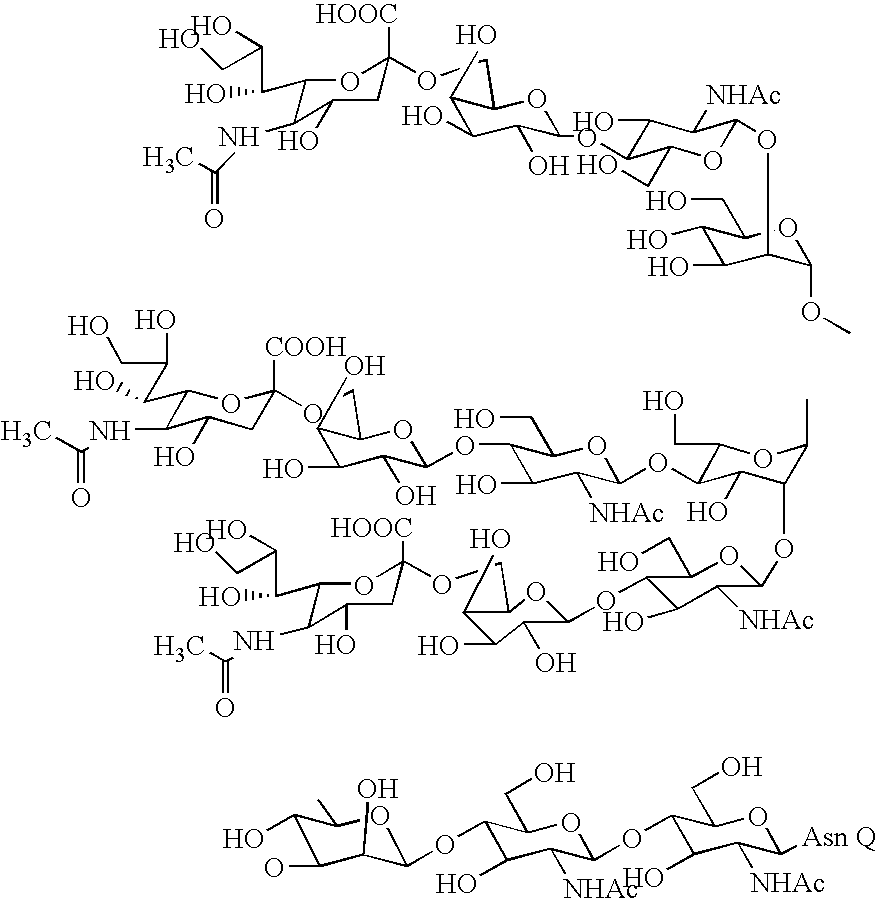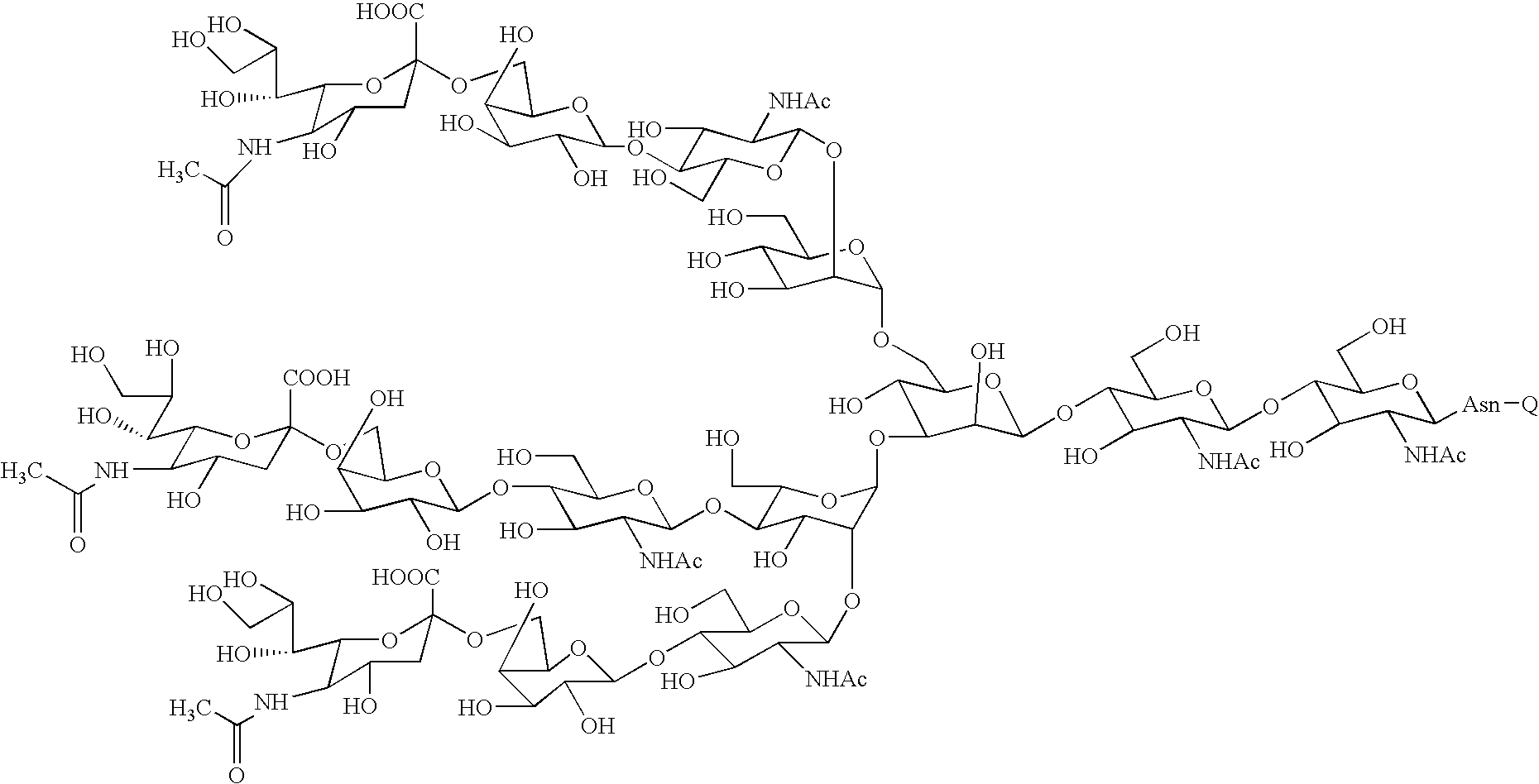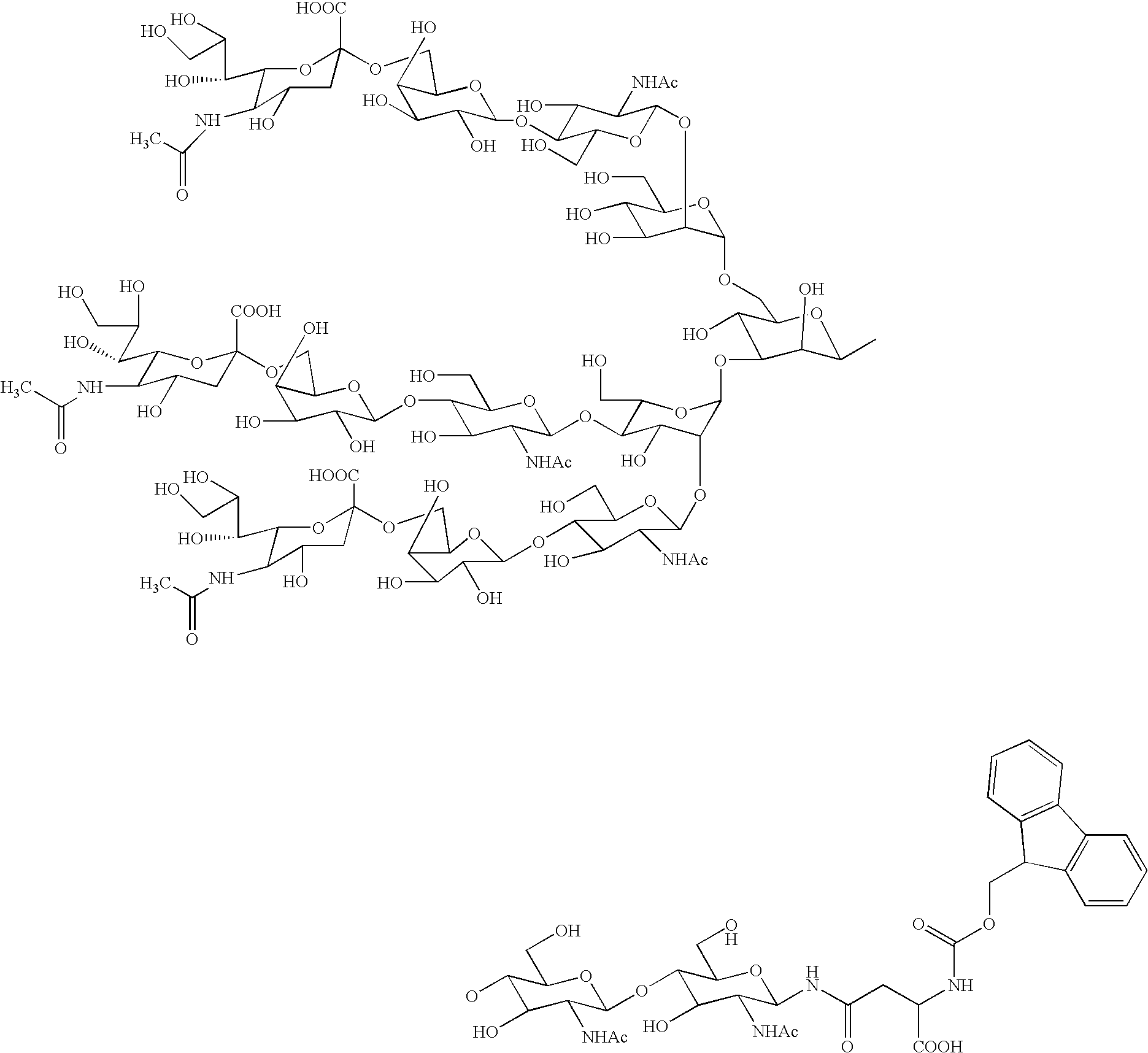Three-branched sugar-chain asparagine derivatives, the sugar-chain asparagines, the sugar chains, and processes for producing these
a technology of sugar chains and asparagine, which is applied in the field of three-branched sugar chain asparagine derivatives, sugar chains, and processes for producing these, can solve the problems of delayed progress in the research on oligosaccharides, and achieve the effect of low cost, efficient and large amoun
- Summary
- Abstract
- Description
- Claims
- Application Information
AI Technical Summary
Benefits of technology
Problems solved by technology
Method used
Image
Examples
example 1
[0054] Fetuin (1 g, Sigma Corp.) was dissolved in phosphate buffer (7.0 in pH, 40 ml), and NaN3 (10 mg) was thereafter added to the solution. To the mixture was added Orientase ONS (HBI Enzymes Inc, 1.5 g), and the resulting mixture was allowed to stand at 50° C. for about 12 hours. The completion of reaction was confirmed by TLC, and the reaction mixture was thereafter filtered with cerite. The filtrate was concentrated, and the concentrate was purified by gel permeation column chromatography (Sephadex G-25, 2.5×100 cm, H2O). The fraction containing the desired oligosaccharide was collected, concentrated and then freeze-dried. To the resulting residue (about 300 mg) were added a Tris-hyrochloric acid-calcium chloride buffer solution (7.5 in pH, 20 ml) and NaN3 (10 mg) to obtain a solution. To the solution was added Actinase E (163 mg), and the mixture was allowed to stand for 48 hours while being checked for pH at intervals of 12 hours. After the completion of reaction was confirme...
example 2
[0060] The compound prepared in Example 1 was dissolved, in an amount of 2 nmoles, in about 10 μl of Tris-hydrochloric acid buffer. To the solution were added 200 nmoles of GDP-fucose and 0.5 mU of Fucosyltransferase V (human recombinant), and the mixture was allowed to stand at 37° C. for about 2 hours for reaction. The reaction mixture was diluted with 20 μl of ultrapure water and thereafter subjected to capillary electrophoresis (fused silica capillary, 50 mm i.d., 60 cm, buffer: 100 mM Tris-borate, 8.3 in pH, 100 mM heptane sulfonate, applied voltage 27 kV, temp. 25° C., 214 nm) for separation to obtain a 3-branched asparagine-linked oligosaccharide derivative containing fucose.
example 3
Biotination
[0061] First, 240 μL of N,N-dimethylformamide and 160 μL of morpholine were added to the asparagine-linked oligosaccharide Fmoc compound obtained in Example 1 per μmole of the latter, and the mixture was reacted at room temperature in an argon atmosphere. The completion of reaction was confirmed by TLC (developer solvent used: 1 M ammonium acetate:isopropanol=8:5), and the reaction mixture was cooled with ice water. To the reaction mixture was added diethyl ether in 10 times the amount of the mixture, followed by stirring for 15 minutes, and the precipitate separating out was filtered off. The residue obtained was dissolved in water, and the solution was evaporated at 35° C. With addition of 3 mL of toluene, the resulting residue was further evaporated. This procedure was repeated three times. The resulting residue was purified by gel column chromatography (Sephadex G-25, H2O) to obtain an asparagine-linked oligosaccharaide having Fmoc group deprotected.
[0062] The above...
PUM
| Property | Measurement | Unit |
|---|---|---|
| Affinity | aaaaa | aaaaa |
| Lipophilicity | aaaaa | aaaaa |
Abstract
Description
Claims
Application Information
 Login to View More
Login to View More - R&D
- Intellectual Property
- Life Sciences
- Materials
- Tech Scout
- Unparalleled Data Quality
- Higher Quality Content
- 60% Fewer Hallucinations
Browse by: Latest US Patents, China's latest patents, Technical Efficacy Thesaurus, Application Domain, Technology Topic, Popular Technical Reports.
© 2025 PatSnap. All rights reserved.Legal|Privacy policy|Modern Slavery Act Transparency Statement|Sitemap|About US| Contact US: help@patsnap.com



